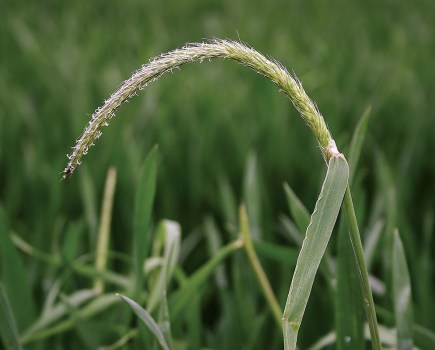With UK agriculture facing some of the greatest uncertainty in recent history, arable farmers must get a tighter grip on production costs and crop agronomy in order to remain profitable post-Brexit.
That was one of the key messages from the recent Hutchinsons technical conference in Peterborough, where speakers urged less focus on the big economic challenges largely beyond farmers’ control and more on improving the resilience of businesses to a volatile and competitive future outside Europe.
Doing so required a clearer understanding of true production costs and more precise agronomy to manage the yield variation on all farms, the 350 delegates heard.
Gross margin analysis only accounted for less than half of total growing costs, so all “fixed” costs should be included when assessing cost of production, Hutchinsons precision technology manager Oliver Wood said. This includes operational costs, such as labour and machinery.
Figures presented by Sebastian Graff-Baker of Andersons put total costs for growing a crop of wheat in 2017 at £1,012/ha, comprising £472/ha of variable costs (seed, fertiliser and sprays) and £540/ha labour and machinery. At a wheat price of around £130/t, that equated to a breakeven yield of 7.8t/ha, but including rent pushed total costs to £1,357/ha and the yield to 10.4t/ha, he said.
Combining such financial information with yield map analysis for individual fields and farms often revealed a “mosaic of profit and loss”, he added.
“If we want to raise farm profitability and become more sustainable then we need to look at what’s causing this yield variation and find ways to address it.”
Make the most of farm data
The Hutchinsons Omnia precision farming system, which combines financial benchmarking with multi-layered crop agronomy analysis, provided an ideal way of identifying and addressing in-field variability, Mr Wood said.
“We need to improve productivity, but it cannot happen at any cost.”
Omnia analysis of one winter wheat crop put the average total cost of production at £995/ha, equivalent to a breakeven price of £134/t at an average yield of 7.4t/ha. That left a slight margin at current wheat prices, however, combining this data with actual yield maps revealed that costs ranged from £95/t on the highest yielding areas (hitting around 12t/ha) to £221/t on the worst parts of the field (where yields were as low as 3t/ha).
“This information is a powerful business planning tool that helps farmers and agronomists identify areas that are costing more than the breakeven price to produce. The precision application maps can then also help us target agronomy to specific areas to tackle this variability.”
Suffolk grower and AHDB strategic farmer, Brian Barker, from Lodge Farm, near Stowmarket, said Omnia was a major part of future decision making processes on his 513ha farm.
The software had already been used to merge yield data from the past 10 years to create field performance maps that highlighted good and bad areas, allowing agronomy to be targeted accordingly.
“With cost of production, I’m a great believer that if you don’t manage it you can’t change it. Omnia gives me the opportunity to look at how all the attributes of my farm, soil, fertiliser plans, etc, change, and I can monitor it much more easily by having it all in one place.
“I’m a great believer in farming to our potential, but at the same time we need to drive down our cost of production to lower the risk from market volatility.”
Since using Omina, Mr Barker said there had been a £3,500 reduction in fertiliser spend across the farm through more precise applications.
] Start with soil to manage variability
Soil health was widely recognised as being the starting point for managing inconsistencies across fields and various speakers highlighted practical advice for growers, which included:
- Get to know your soil and how different components interact – consider chemical, biological and textural components, organic matter, nutrient content, pH, etc
- Basic soil tests offer limited information, so consider a detailed Healthy Soils assessment on representative fields, combined with regular soil testing and visual inspections
- Examine soils for structural issues (e.g. compaction) – ensure it is done when soils are moist enough (typically October to April)
- Earthworms play a key role in improving soil health, so do all you can to maximise numbers, through increasing organic matter, reducing tillage intensity and rotational changes
- Assess earthworm numbers by digging test pits of 20x20x20cm with a fork, laying soil out and identifying worms by hand. Ideally take 20 samples in a ‘W’ shape for fields up to 35ha
- Worm populations of >16 per soil pit (>400/m2) are beneficial to productivity
- Cover crops can help address soil issues, but only if they are carefully targeted to individual situations.




